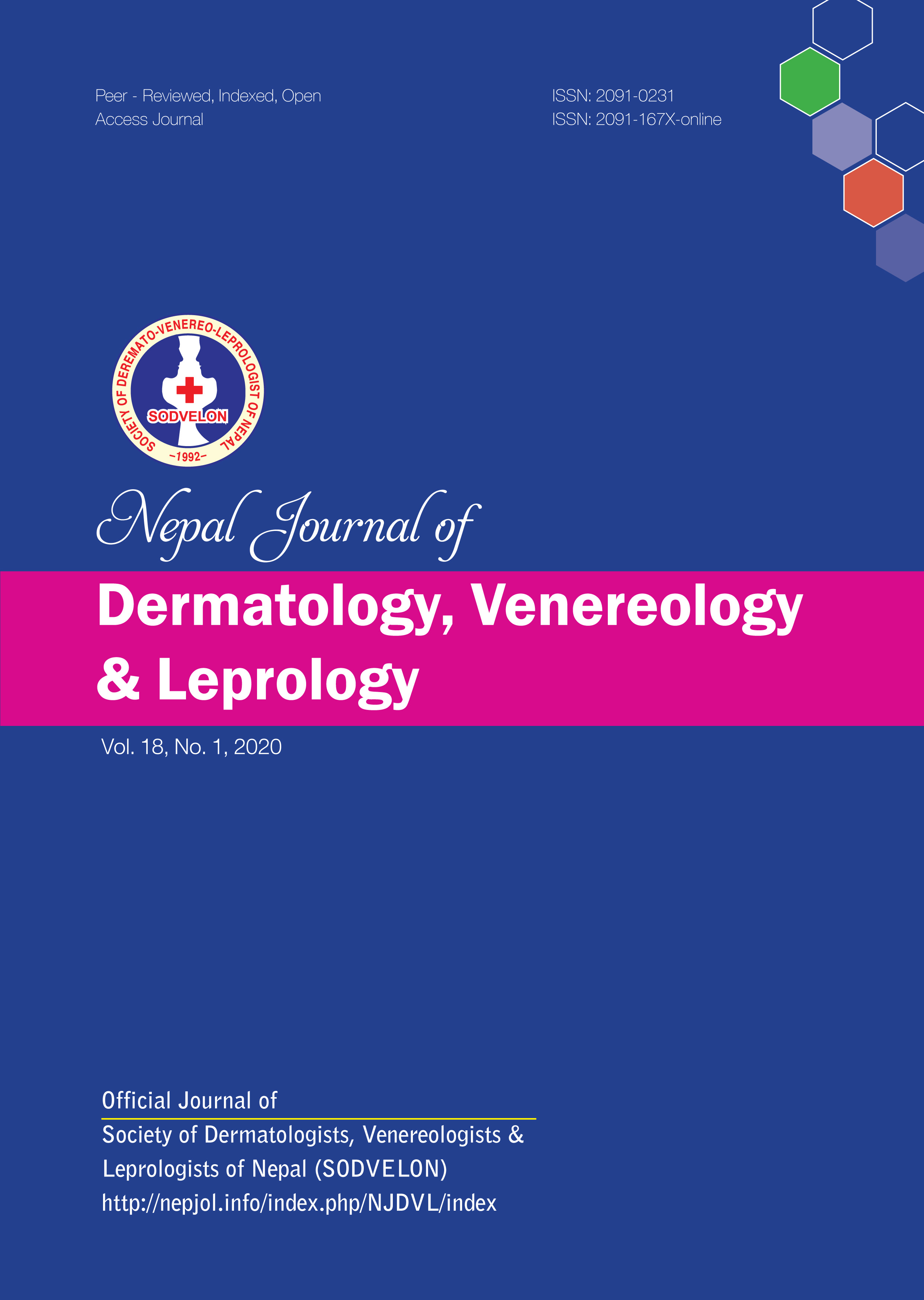Blistering Diseases in a Tertiary Care Hospital: A 10-year Audit
DOI:
https://doi.org/10.3126/njdvl.v18i1.30259Keywords:
Autoantibodies, Fluorescent Antibody Technique, Pemphigoid, Bullous, Pemphigus, Skin Diseases, Vesiculobullous,Abstract
Introduction: Cutaneous blisters can occur in variety of conditions. They are broadly classified as immunobullous or non-immunobullous. Immunobullous blistering diseases can further classify as intraepidermal or subepidermal. Non-immunobullous blistering disease are commonly due to infections, drugs among others. Some of the blistering disease carry significant mortality and morbidity. There are only limited data on blistering diseases from Nepal, so this study will provide details on the prevalence of this rare dermatological disease from one of the tertiary care referral hospital in the country.
Objective: To assess the clinical pattern and prevalence of various blistering diseases in a tertiary care referral hospital.
Materials and Methods: All of the data were obtained from the admission register maintained at department of dermatology and venereology, National Academy of Medical Sciences. All the patients admitted with blistering disease from year April 2008 till March 2018 were included. The details including age, sex, type of blistering disease and length of hospital stay were recorded.
Results: A total of 710 patients were admitted in the dermatology ward over the period of 10 years. There were a total of 193 blistering disease admitted during this period. Autoimmune blistering disease was diagnosed in 59 patients whereas 100 patients had non-immunobullous disease. The age grouped range from 4- 93 years with the mean age of 43± 19.71 years. The average number of hospital stay of all blistering diseases was 11.73±11.36 days.
Conclusion: Blistering diseases are one of the most common conditions requiring admission in dermatology ward. Some of these diseases carry a significant morbidity and mortality. So, prompt diagnosis and treatment is of utmost importance.
Downloads
Downloads
Published
How to Cite
Issue
Section
License
Copyright on any research article is transferred in full to Nepal Journal of Dermatology, Venereology & Leprology upon publication. The copyright transfer includes the right to reproduce and distribute the article in any form of reproduction (printing, electronic media or any other form).




